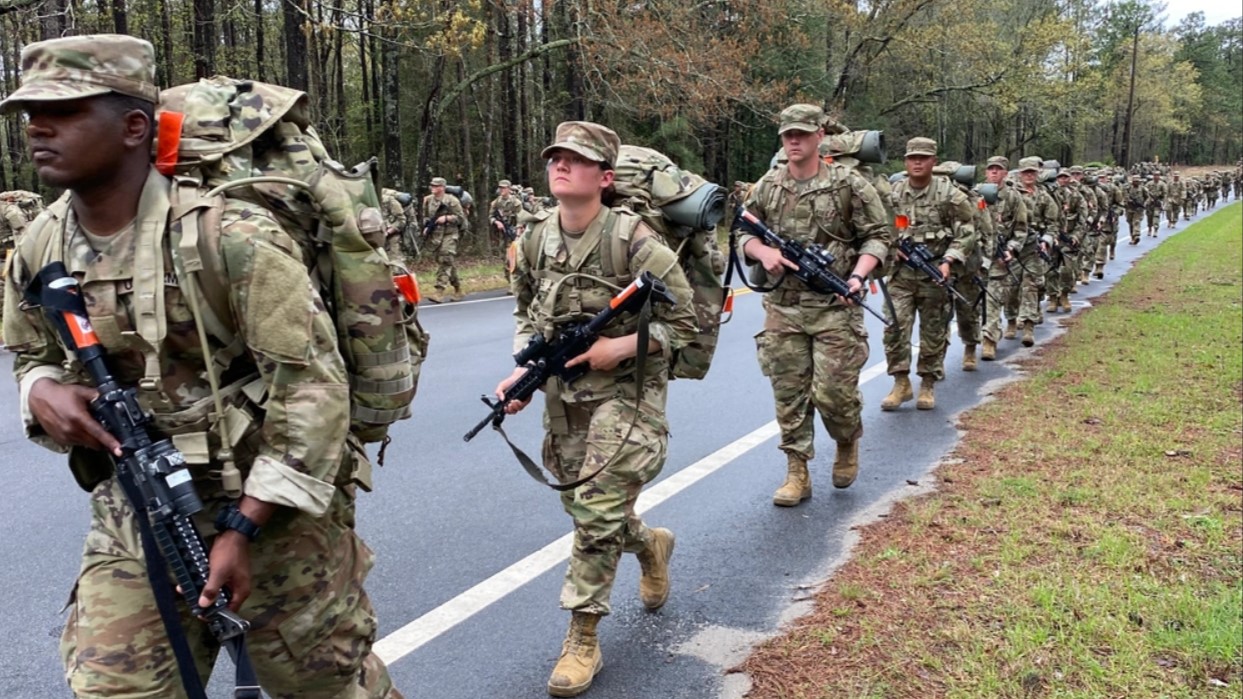

In a gripping display of discipline and determination, the U.S. Army’s Basic Combat Training (BCT) at Fort Jackson is pushing recruits to their limits, marking a pivotal moment in their journey from civilians to soldiers. This ten-week program, renowned as the largest initial training center in the Army, is not just about physical fitness; it’s a rigorous transformation that shapes the very essence of military readiness.
As recruits arrive at Fort Jackson, they are immediately thrust into a world of strict grooming standards, where every haircut symbolizes unity and discipline. Male recruits receive buzzcuts, while female soldiers must style their hair in a neat bun, braid, or ponytail, reinforcing the Army’s commitment to appearance and order.
The urgency of the training is palpable. Recruits face the daunting Army Combat Fitness Test (ACFT), which includes demanding exercises like deadlifts and sprint drag carries. Drill sergeants, the backbone of BCT, instill the values of teamwork and resilience, pushing recruits through an obstacle course that challenges their physical strength and mental toughness.
The obstacle course, spanning over 2,000 feet, is a battleground of its own. Recruits must navigate wall climbs, barbed wire crawls, and cargo nets, simulating the harsh realities of combat. With an impressive 85% of recruits completing the course on their first attempt, those who falter receive additional training, ensuring no soldier is left behind.
Adding to the intensity, the infamous gas chamber exercise exposes recruits to CS gas, a non-lethal tear gas, as they learn to trust their protective masks under stress. This essential training prepares them for potential chemical warfare, a stark reminder of the dangers they might face on the battlefield.
Hand-to-hand combat training, known as the Modern Army Combatives Program (MACP), further equips recruits with life-saving skills. They learn techniques from various martial arts disciplines, ensuring they are prepared for close-quarters confrontations. The rigorous training culminates in annual combatives tournaments, fostering camaraderie and competition among soldiers.
Nutrition is equally critical during BCT. Recruits are fed balanced meals at the dining facility, ensuring they have the energy to endure their demanding schedules. In the field, they rely on Meals Ready to Eat (MREs), designed for sustenance under challenging conditions.
As the program progresses, soldiers engage in Field Training Assemblies (FTAs), simulating real-world combat scenarios. Here, they learn to set up camouflage, navigate obstacles, and execute tactical maneuvers under fire. The training emphasizes speed and decisiveness, vital skills for survival in hostile environments.
Drill sergeants play a crucial role, mentoring recruits through the emotional and physical challenges of BCT. They not only instill discipline but also provide support, helping soldiers navigate homesickness and personal hurdles.
As the grueling training period nears completion, recruits prepare for their indoor graduation ceremonies, marking their transition from civilians to soldiers. This momentous occasion, attended by family and friends, celebrates the culmination of months of hard work and dedication.
The U.S. Army’s Basic Combat Training at Fort Jackson is a testament to the strength and resilience of its recruits, shaping the future of the armed forces. As these soldiers emerge from the rigorous program, they are not just prepared for battle; they are ready to uphold the values and responsibilities that come with serving their country. Stay tuned as we continue to cover the unfolding stories from Fort Jackson and beyond.
![DVIDS - Images - Fort Jackson Basic Training [Image 2 of 25]](https://d1ldvf68ux039x.cloudfront.net/thumbs/photos/2307/7916418/2000w_q95.jpg)






